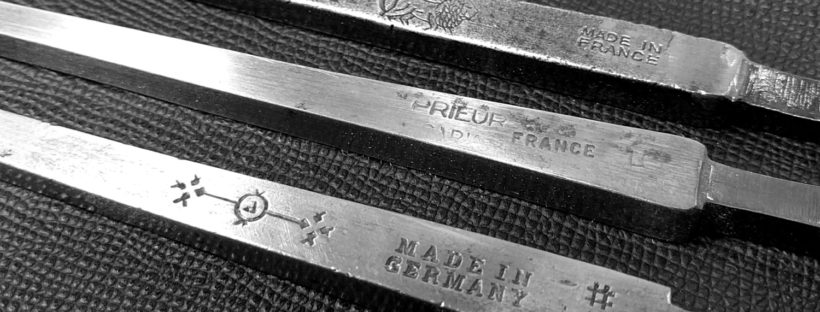Using the Country of Origin Mark to Date Fencing Swords
I am frequently requested to examine, appraise, or date fencing swords and thought I would share how the country of origin mark can be used to date fencing swords. It’s a useful tool when assessing purchases at auctions or antique shops.
In 1890 during a protectionist wave, the United States congress put into law the Tariff Act of 1890, aka the McKinley Tariff Act, which raised the average tax on imported goods up to nearly 50%. In addition, to educate consumers, the bill required all goods imported into the United States for sale had to be permanently marked with the country of origin in the English language.
Sec. 6. That on and after the first day of March, eighteen hundred and ninety-one, all articles of foreign manufacture, such as are usually or ordinarily marked, stamped, branded, or labeled, and all packages containing such or other imported articles, shall, respectively, be plainly marked, stamped, branded, or labeled in legible English words, so as to indicate the country of their origin ; and unless so marked, stamped, branded, or labeled they shall not be admitted to entry.
Fencing weapons were no exception. Independent of the blade’s makers mark, which indicated the manufacturing firm, if the blade also bares the county of origin it was likely produced after this tariff act went into effect in 1891.
Applies Only to Markings in English
If the blade’s county of origin mark is clearly written in English, i.e. “Made in France” then the blade was certainly stamped in accordance with the 1890 Tariff Act and was imported into the United States for retail after 1891. Keep in mind, too, that “Germany” is the English word for that county, and thus indicates the same post Tariff Act production. There are exceptions, as the English word “France” is also the French word for France, and some French makers marked blades with “France” prior to 1890. Below you can see a Solingen (Germany) foil blade (bottom) with the English stamp “Made in Germany” and two French-made blades. The G. Pion blade (top) is marked with the English “Made in France” while the Prieur blade simply with “France.”
This does not mean that the blade was made before 1891 if there is no country of origin mark! The Tariff Act of 1890 labeling mandate only applied to goods imported into the United States, for retail in the United States. Tourists visiting the Souzy Paris retail shop in Paris could have bought souvenir foils and brought them back to the US, and those foils would not have been marked “Made in France.” European retailers would also not be required to mark their products in accordance with US law. This marking convention allows us only to sleuth the provenance on a fraction of individual foils found with the country of origin mark and does not guarantee pre-1890 origins if not present.
City Name Exception
City names are an exception to this rule, as swordmakers in Solingen and Klingenthal (and others) used their city’s name and reputation as part of their branding. These city names alone do not indicate a post 1891 production date.
For example, If we found a fencing foil with a blade marked “Coulaux & Cie Klingenthal” we can narrow its production to between 1850 and 1962, when Coulaux & Cie. was documented to be making fencing blades in the city of Klingenthal. If the blade also contains “Made in France” – or possibly even just “France” – we may further narrow the fencing sword’s manufacture to between the Tariff Act of 1891 and Coulaux’s closure in 1962. Further details of the weapon including the deterioration evident, materials used, and the style of components will help further narrow the date.
Markings are not absolute indicators
More than a familiarity with makers marks is required to fully approximate a weapon’s manufacturing date and provenance. Not to mention that makers marks were also sometimes counterfeited…
In order to accurately assess the age of a sword experts employ knowledge of the evolving material choices, assembly techniques, and manufacturing trends to isolate a probable date in the timeline. Experts of classical fencing swords also know when variations of swords were popular and when the fencing masters or schools who created them were active. The maker and country of origin marks are valuable tools to date fencing swords but are not absolute indicators of age or make.

